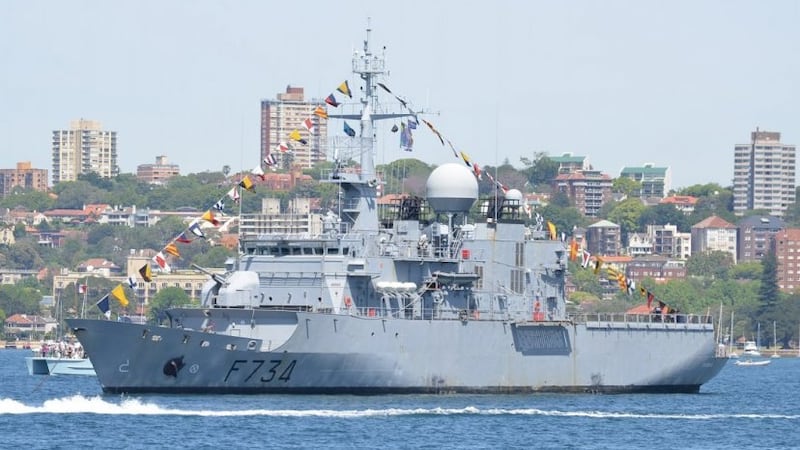Above: The French frigate Vendemiaire (pictured here in Sydney in 2013), was discovered lurking off the coast of Aotea, Great Barrier Island unannounced. Photo / Saberwyn - Own work, CC BY-SA 3.0
The Royal New Zealand Navy was leading a joint military operation of US marines, Australian naval personnel and New Zealand forces in the same area of the Hauraki Gulf where a French warship was discovered this month, but they failed to mention it whilst denying the ship was involved in anything but maintenance.
The submarine operation was revealed by the Australian Defence Force in a media release last night, with it seemingly taking place as close as 20 kilometres from where the warship was spotted.
Asked for comment about the exercise, a New Zealand Navy spokesperson said they were "not aware" of the Australian press release, and asked teaomaori.news for a copy.
"The NZDF is not in the business of hiding these things. Just send me the release," they said.
Ten days ago the presence of French warship Vendémiaire piqued interest when an AIS receiver (a radio system which identifies ships) detected it, off the coast of Great Barrier Island.
Neither the government, nor Defence Force had announced its arrival, and even the Auckland Coastguard said it caught it by surprise.
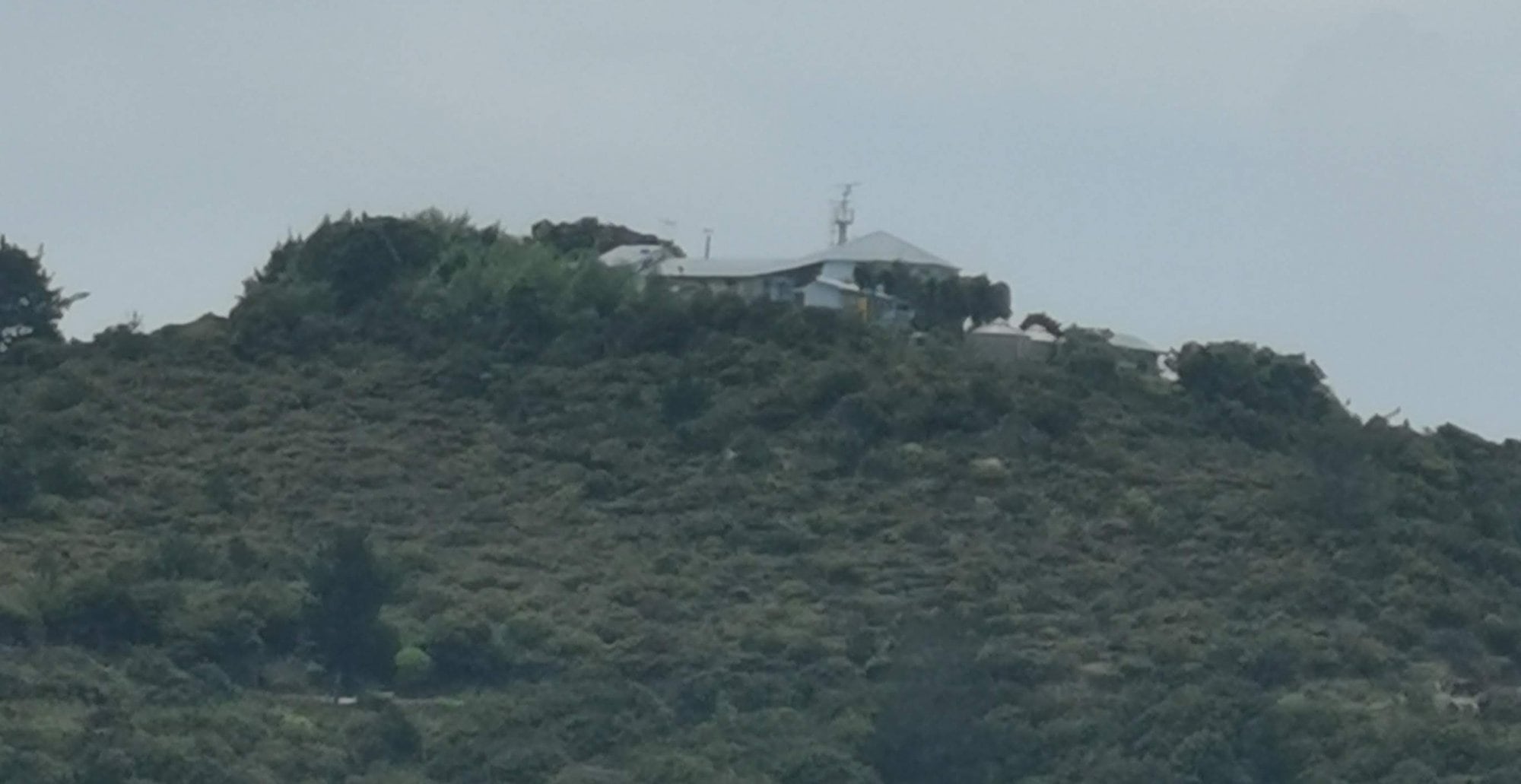
The NZ Navy outpost on Aotea Great Barrier Island is reportedly equipped with hydrophones to detect sounds or movements beneath the surface of the water. It has now played host to US marines and Australian Navy personnel, according to a press release from the Australian Defence Force today. Photo / AoteaGBI.news
Vendémiaire has an armament of Exocet anti-ship missile systems, a 100mm naval gun, two 20mm guns, and torpedoes, although it is unclear if it is carrying any weapons or missiles. It is part of the French Floréal-class fleet.
Not nuclear-powered, nor nuclear-armed, the 80-metre vessel is usually based in New Caledonia.
NZDF staff initially referred media enquiries to the French embassy which said the vessel had been at the Royal NZ Navy base at Devonport for routine maintenance, and it was simply performing checks in the gulf before returning to its home port in Noumea.
The AIS transponder on the vessel said the ship was headed to Tokyo.
Prime Minister Chris Hipkins told media in Wellington he knew nothing about the French vessel.
Hipkins' office said the French ship was not involved in any joint exercises, "but for specifics about the Vendémiaire's programme you would need to speak with the French Embassy".
Australian Defence Force reveals Kiwi-led operation
Today’s press release on the Australian Defence Force website claimed Aussie service members were part of a trans-national contingent of servicemen taking part in an exercise, including US marines.
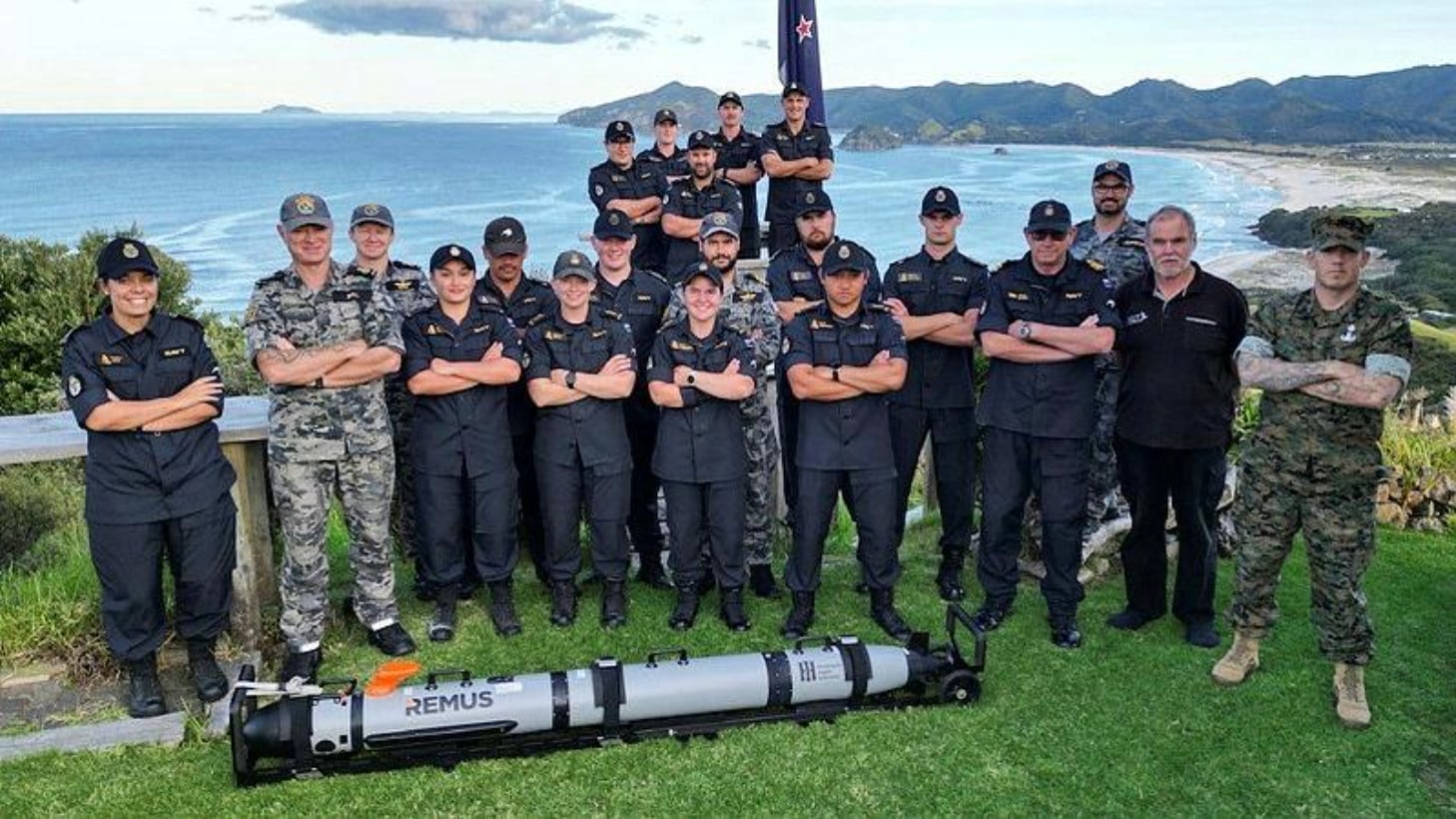
Members of the Royal Australian Navy Maritime Geospatial Warfare Unit, Royal New Zealand Navy and US Marine Corps with a REMUS 300 autonomous underwater vehicle at Aotea, Great Barrier Island, New Zealand. Photo / Australian Defence Force
The release pictures New Zealand, Australian and US service people in front of a REMUS 300 unmanned submarine, near an NZDF base on Great Barrier Island/ Aotea, just off the coast from where the vessel was operating.
A former intelligence and defence policy analyst, Paul Buchanan, speaking to the New Zealand Herald on the vessel's discovery speculated Chinese submarines had been active in the region and the french vessel may have been called up for an exercise in readiness or deterrence.
"Destroyers are often used to hunt submarines but in the modern day that's done in tandem with attack submarines. We can't hunt them because we don't have the resources. The best way to do that is to have a submarine quietly listening for them coming through."
According to the manufacturer's website, the primary applications of the REMUS 300 UUV include surveillance, anti-submarine warfare (ASW), intelligence, and reconnaissance (ISR).
The Aotea outpost is reportedly equipped with hydrophones to detect sounds or movements beneath the surface of the water, leading into the Hauraki Gulf.
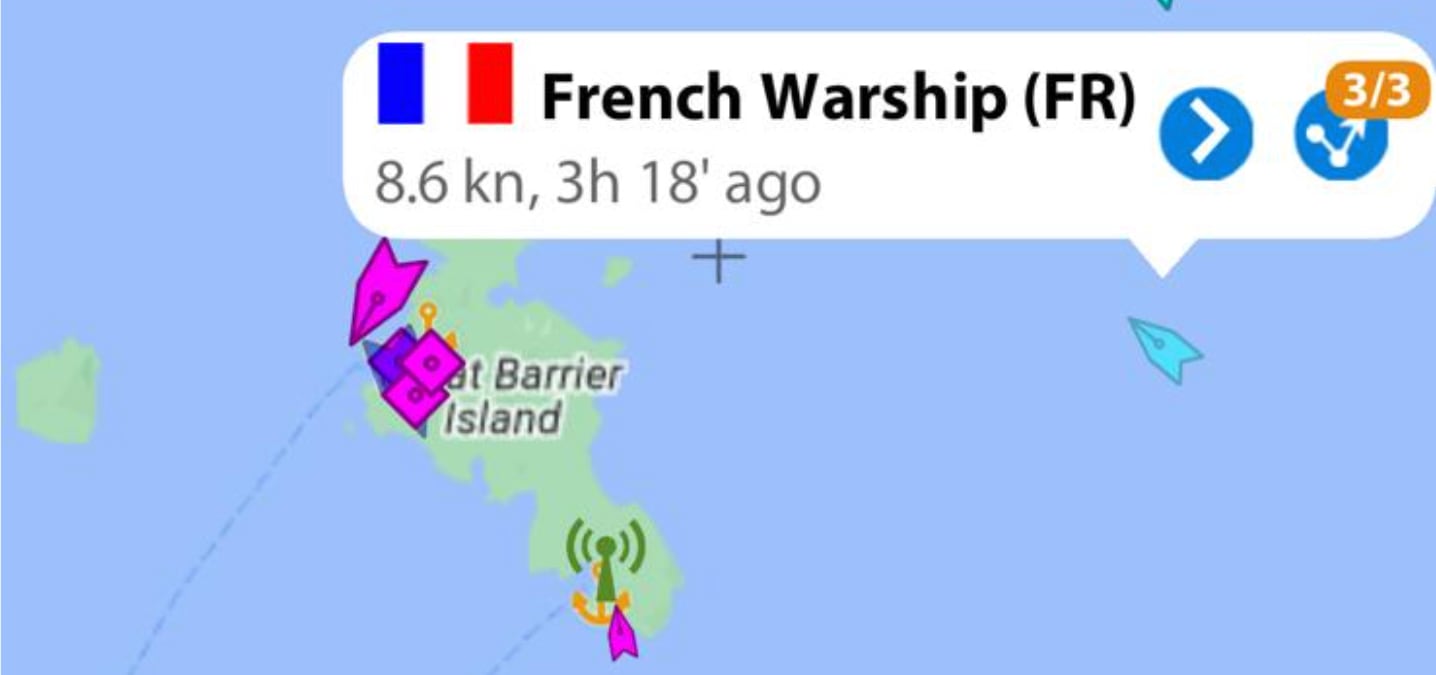
The NZ government denied a french warship was involved in anything but maintenance when it was discovered in NZ waters earlier this month, but they also failed to announce an NZ-led joint force military operation with U.S. marines and the Australian Navy was underway in the same area, until it was announced later by the Australian military. Photo / Supplied
The navy has previously acknowledged the primary purpose of the base was to provide early detection and warning of foreign submarines entering New Zealand's waters by detecting their acoustic signatures and enabling the navy to track their movements.
Routine operation
The Australian release claims the exercise was more benign than preparing to hunt overseas adversaries and its 'Maritime Geospatial Warfare Unit' (MGWU) was surveying for Land Information New Zealand's (LINZ) national charting action.
HMNZS Matataua (Eyes of the Warrior), a ship that patrols and maps the ocean floor, was also involved, it said, and there was training on how to detect mines.
Australian Lieutenant Callan, who participated in the exercise, said the opportunity was vital for improving the Royal Australian Navy’s own capabilities.
“By conducting autonomous underwater vehicle (AUV) training with the Mine Countermeasures Team, MGWU gained access to new and emerging technology and equipment such as the REMUS 300 AUV,” the release stated.
“The REMUS 300 is at the cutting edge of AUV technology and we were very lucky to experience it first-hand,” he said.
Pacific heat
Geopolitics has been heating up in the Pacific after Australia signed a deal with the UK and US militaries (codenamed AUKUS), to provide nuclear-propelled, but not armed submarines in 2021.
New Zealand was not part of the deal that triggered a diplomatic row because it involved cancelling a contract with France for diesel-propelled submarines.
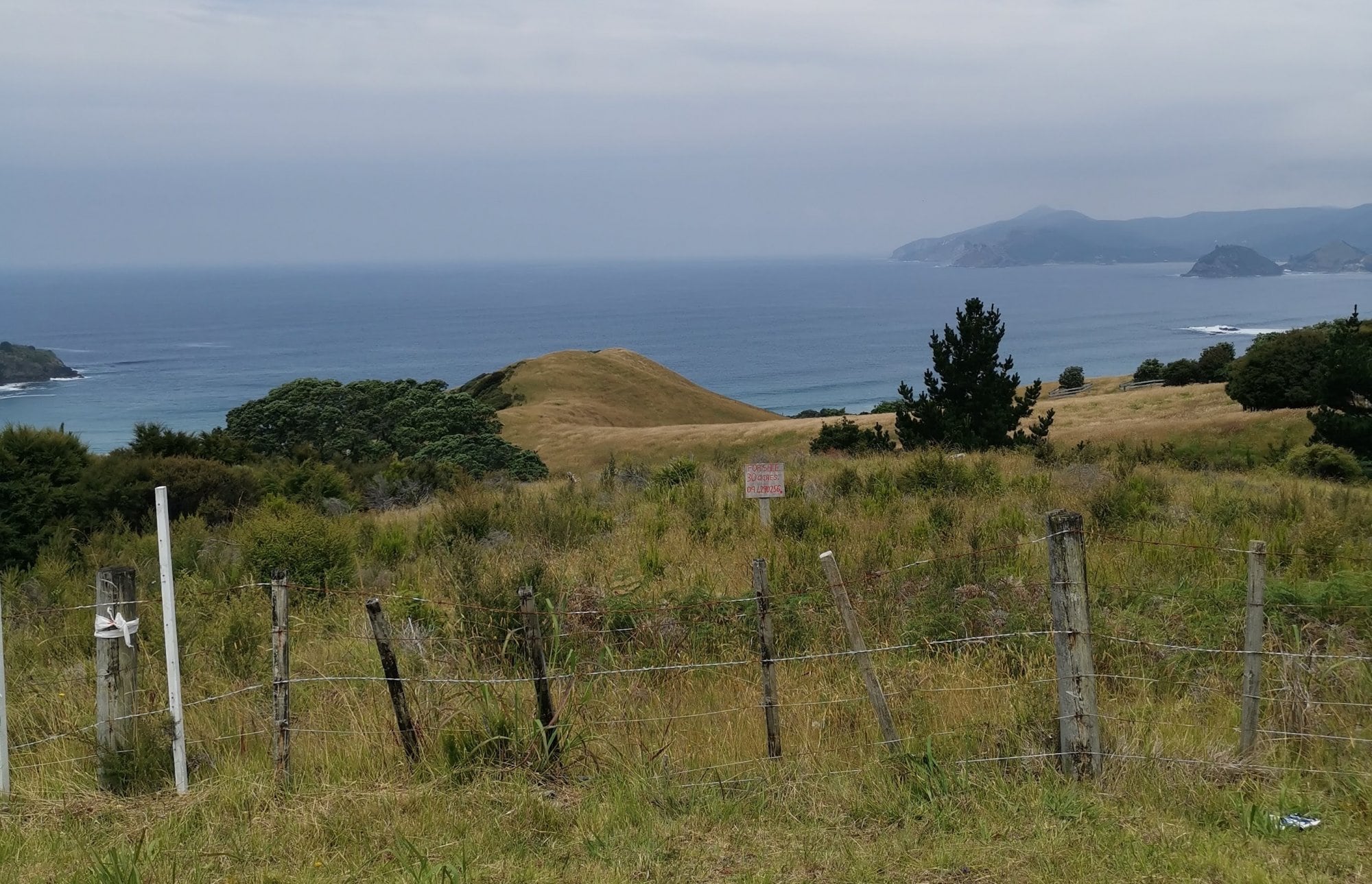
The view from Palmer's Beach near the NZDF Naval Base on Aotea, looking out to where a French Warship was operating, 30 miles off the Hauraki Gulf Island's coast. Photo / AoteaGBI.news
Australia made no secret AUKUS was to deter an increasingly assertive China, which in recent years has disputed the legitimacy of the territorial waters of its neighbours and built man-made military island bases in the seas south of China.
Most recently the Chinese government has conducted military operations around the islands of Taiwan, saying it wants the democratic island under the control of Beijing by 2030.
China’s Foreign Ministry warned allies just days ago they were headed "down the wrong and dangerous path for their own geopolitical self-interest,” with AUKUS.
Prime Minister Chris Hipkins has declined to say if he would seek New Zealand's admission into the programme.
Mana whenua express concern
Aotea mana whenua Ngāti Rehua Ngātiwai ki Aotea expressed concerns about the revelations from the Australian release, not about the operation per se but how it was conducted.
Kelly Klink, a Ngāti Rehua Ngātiwai ki Aotea spokesperson, said if the operation was routine enough for a press release, they should be informed.
"Why aren’t we being told anything as treaty partners?" Klink said.
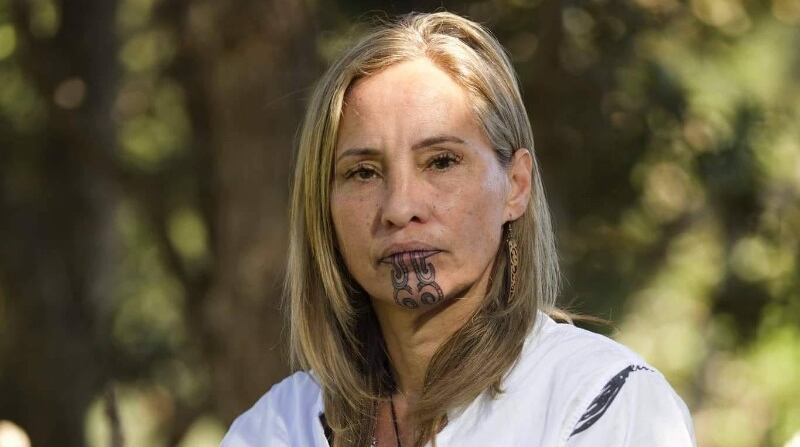
Ngāti Rehua Ngātiwai ki Aotea spokesperson Kelly Klink expressed concerns expressed mana whenua concerns not about the operation per se but how it was conducted. Photo / Supplied
"They are manuhiri, there is process, there is tikanga, there should be pōhiri for people visiting the island."
Klink expressed concern about a rāhui laid on several of the island’s bays to attempt to contain the exotic, invasive caluerpa seaweed which is engulfing marine life.
“It’s just about communication,” Klink said.
“Were they launching things into the water that could spread this stuff? What were they doing in the bays?’
Closer ties
The New Zealand Defence Force yesterday signed a cooperation agreement with the Australian Army.
Plan ANZAC, named after a joint World War I force, aims to improve army interoperability with more cooperation over training, capability, readiness and personnel.
"As close neighbours and allies, we have a mutual commitment to support each other's security, closely coordinate our efforts in the South Pacific, and maintain a shared focus on the security and stability of our wider region," New Zealand Army chief Major-General John Boswell said in a statement.
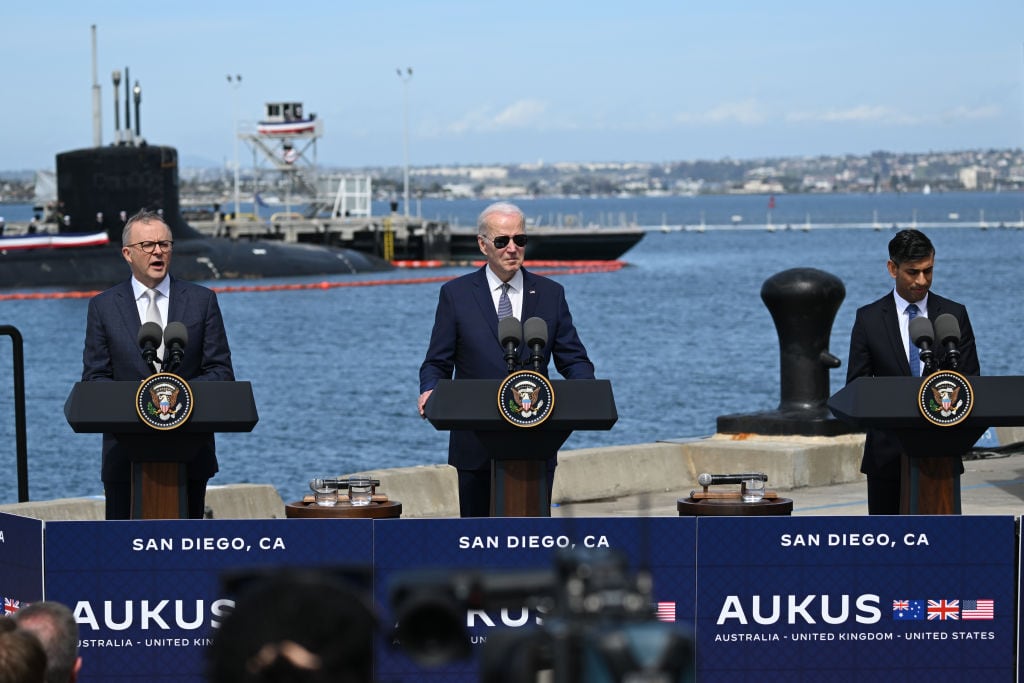
Australian PM Anthony Albanese speaks during an AUKUS Partnership meeting with US President Joe Biden and UK Prime Minister Rishi Sunak at Naval Base Point Loma in San Diego, California, United States on March 13, 2023. Photo / Tayfun Coskun/ Anadolu Agency via Getty Images
The proposal will also support the Five Eyes intelligence-sharing alliance's military standardising accord, which aims to get American, British, Canadian, Australian, and New Zealand armies working better together.
The NZDF acknowledged the request for comment on the joint operation by teaomaori.news this morning.
Beyond the initial telephone call where the representative denied knowledge of the operation, the Defence Force has yet to respond.

